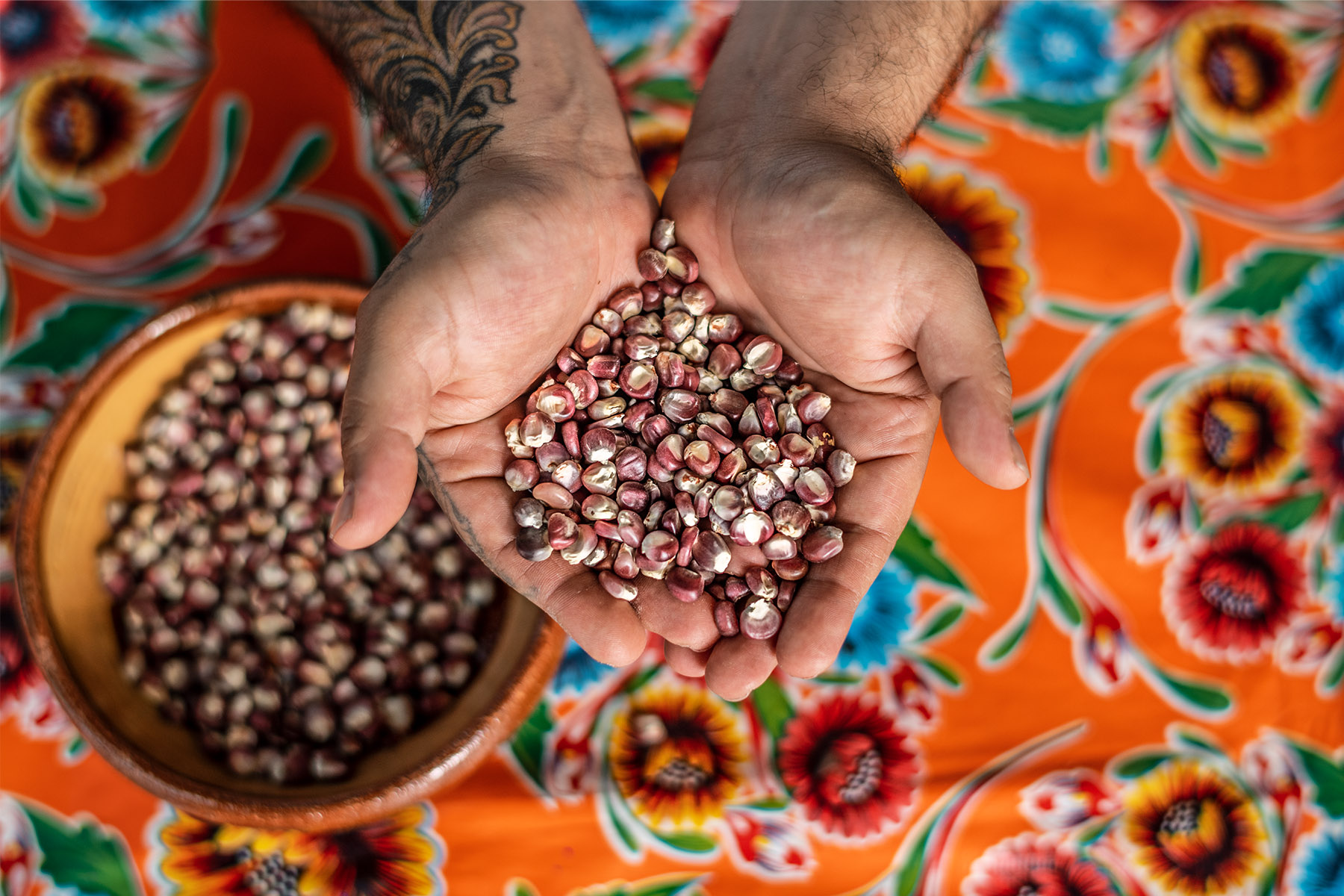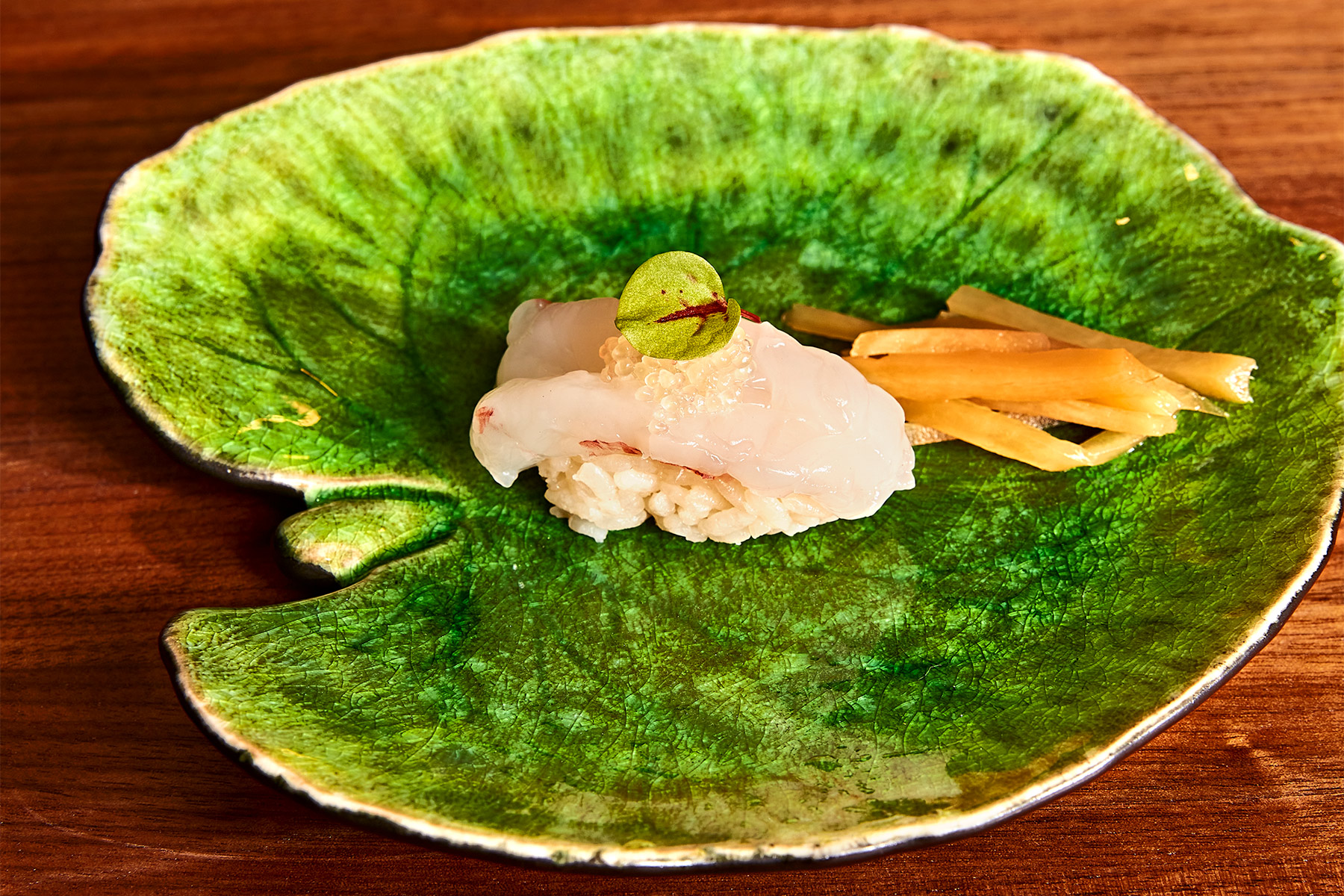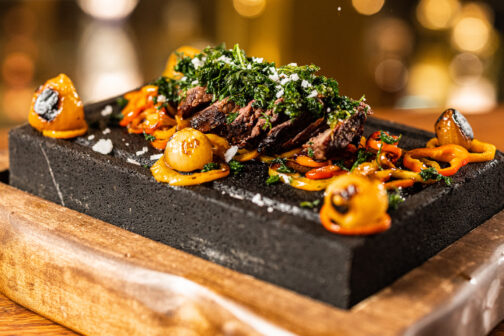Dallas’ dining scene does not have a strong culture of chef’s tasting menus, an experience where diners sign up for a series of courses at a fixed price. Tastings are commonly understood to be pricey, night-long, formal affairs for a select number of diners who can afford to pay and have the patience to enjoy them. But in the rest of the United States, the tasting is changing character. It’s time for us to catch up.
New York Times food correspondent Brett Anderson recently wrote about a “new generation of tasting menus” at restaurants. He cites vegetarian, Black, and Asian American chefs who are using an old format to express new ideas. These diverse young chefs, he writes, “have embraced tasting menus while rejecting the most grandiose conventions of the tradition.”
Gone are the caviar and dress codes. Gone, too, is the grandiose cost: Anderson reports on restaurants in Mississippi, Philadelphia, Oregon, and Louisiana that serve seven courses for $95, five courses for $55, six courses for $75, and seven courses for $80. This is in part because these operations are more efficient; with a tasting, a chef knows exactly how much food to order and when to prepare it.
This form of dining basically does not exist in Dallas. I would love to see more of it, so let’s think about ways to encourage a not-so-formal tasting meal culture locally.
Currently, we have only two dining experiences close to the kind of casual-yet-ambitious tasting menus Anderson describes. Petra and the Beast’s Saturday nights clock in at a slightly higher price point: six courses for $135. But they are BYOB, and besides that, a Saturday at Petra might be the single best dinner experience in this city. Saigon Block in Richardson offers its Vietnamese bò 7 món (“seven courses of beef”) banquet feast for $42, but this is a traditional dinner, not a “cheffy” one.
All the rest of Dallas’ current multicourse crop spiral northwards in price. La Resistencia—Petra’s rival for best tasting in town—is longer and costlier. We’ve got omakase sushi options, including Shoyo and Tatsu, as well tour-of-the-menu selections from the à la carte offerings at Georgie and Monarch. Carte Blanche offers six- and 12-course options, but its style of food goes against the new grain: strictly old-fashioned Euro-centric luxury, a throwback to earlier days of what the Times calls a“once-stuffy form.” (Update: Earlier this week, Carte Blanche announced a more casual four-course choice.)

Even prix fixe menus—where you choose two or three dishes from a variety of options for a set price—are rare finds in Dallas. Our power lunches and pre-concert meals tend to be à la carte. The only prix fixe spot I can think of is Gorji in Addison.
What gives? In many cities, the prix fixe menu is a widespread choice. It is almost standard in Europe, especially at lunch, when you can enjoy, say, an appetizer and a main for 20 euros.
Maybe Dallas’ a la carte dining culture is so deeply ingrained, we haven’t been able to embrace anything else. If this is the case, read that Times article and remember that a “tasting menu” does not necessarily mean a three-hour hoity-toity experience requiring a jacket, tie, and new credit limit.
How can we foster a culture like the casual tastings that Anderson describes?
The first prescription is for diners to place more trust in their favorite chefs. The idea of going to a restaurant to eat five plates of food, none of which you will choose, still leaves a lot of folks nervous. What if the main course isn’t steak? Terrifying! Maybe a more conventional prix fixe—you get three appetizer options and choose one—can be a baby step for cautious diners to take. But, if I am confronted with a reluctant eater, my message would be simpler: our chefs are really good! Trust them!
The second solution involves smaller, more characterful restaurant spaces. A kitchen that serves, say, six courses for $75 is not capable of feeding a thousand people a day. The complexity of preparations makes a crowd of that size impossible. Small, daring, inventive tasting formats are better in more intimate, even historical spaces, like Petra’s 90-year-old building in East Dallas (which it will soon, sadly, be leaving). The space Tatsu occupies in the Continental Gin Building is even older. Nearby Cry Wolf, in a converted Subway, is small enough that some of the cooks will explain parts of your meal as you eat.
Another running thread through Anderson’s story is that the chefs pursuing this kind of intimate tasting format tend to be younger and from non-French culinary backgrounds. These are outsiders who, in the words of Mississippi chef Zacchaeus Golden, “didn’t go through [the pandemic] just to go back to cooking someone else’s food.” Vince Nguyen, in Portland, Oregon, told Anderson that the tasting menu format “really empowered me to embrace my heritage.”
The lesson here is that Dallas needs to encourage young, minority, immigrant, and rising chefs to serve their food the way they want to. Some may choose the tasting menu format. Others, though, may not.
Dallas isn’t a tasting menu city, but it is an extraordinary creative hub for pop-ups, guest chefs, deliveries, brewery vendors, farmer’s market stalls, and take-home baskets. For many of our rising young stars, one-night events and pick-up meals are a great form of self-expression. So, funnily enough, I’m ending this story with a different moral than the one I expected.
Originally, I felt left out of a national trend, wishing we could have meals like the ones in Anderson’s story. But, as with so many other things, maybe Texans just like to eat differently. Maybe we’re enjoying the same level of innovation and culinary creativity that’s sweeping the rest of the country. Maybe it’s just being served on paper plates.
Author







